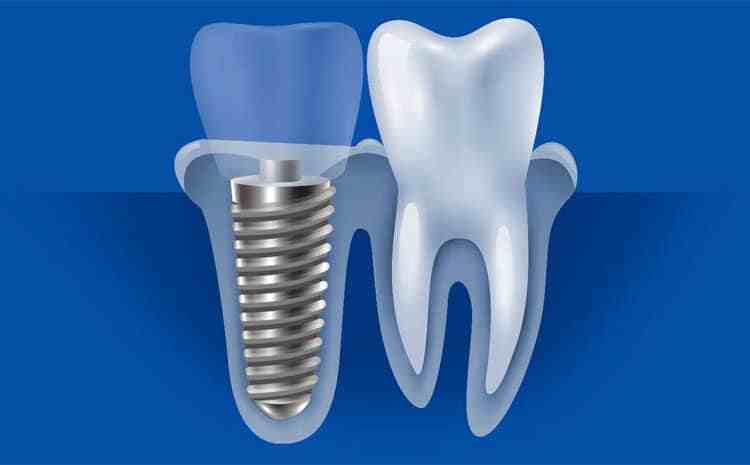Dental implants are a popular solution for replacing missing teeth. They provide a permanent and natural-looking option that can significantly improve a person’s quality of life. However, one of the biggest challenges patients face is the cost associated with dental implants. Many people wonder if their medical insurance will cover these expenses. Understanding how to navigate insurance coverage for dental implants can help patients manage costs effectively. This article provides a comprehensive guide on how to get dental implants covered by US medical insurance.
What Is Dental Implants?
Dental implants consist of three main components: the implant itself, an abutment, and a crown. The implant is a titanium post surgically placed into the jawbone, acting as a root for the artificial tooth. The abutment connects the implant to the crown, which is the visible part that resembles a natural tooth. The entire process can be costly, often ranging from $3,000 to $6,000 per implant, depending on various factors such as location and complexity of the procedure.
Why Insurance Coverage is Complicated
Many insurance companies view dental implants as a cosmetic procedure rather than a medical necessity. This classification can limit coverage options. However, there are circumstances under which dental implants may be covered by insurance:
Medical Necessity: If missing teeth lead to significant health issues, such as difficulty chewing or jawbone deterioration, some insurers may classify implants as medically necessary.
Accidents or Trauma: If teeth are lost due to an accident or injury, insurance may cover the cost of implants.
Health Conditions: Certain health conditions that result in tooth loss may also qualify for coverage.
SEE ALSO: How Do I Cancel My Humana Dental Insurance: A Step-by-Step Guide
Steps to Get Dental Implants Covered by Insurance
Review Your Insurance Policy: Start by reviewing your current dental and medical insurance policies. Look for specific language regarding coverage for dental implants. Some plans may cover parts of the procedure, such as tooth extraction or bone grafting.
Contact Your Insurance Provider: Call your insurance company to ask detailed questions about your coverage options.
Key questions include:
- Does my plan cover dental implants?
- What percentage of the procedure does the policy cover?
- Are there any waiting periods before coverage begins?
- Is there a maximum annual limit on benefits?
Get Documentation from Your Dentist: Your dentist can provide essential documentation that supports your need for dental implants.
This may include:
A detailed treatment plan outlining why implants are necessary.
X-rays or other imaging showing bone loss or damage.
A letter explaining how missing teeth affect your overall health.
File a Pre-Authorization Request: Before undergoing the procedure, submit a pre-authorization request to your insurance provider. This request should include all relevant documentation from your dentist and clearly state why the implants are medically necessary.
Follow Up with Your Insurance Company: After submitting your request, follow up with your insurer to ensure it has been received and is being processed. Be persistent and keep records of all communications.
Consider Dual Coverage: If you have both medical and dental insurance, check if you can use both plans to maximize your coverage.
Some procedures may be covered under one plan but not the other.
Explore Flexible Spending Accounts (FSAs) or Health Savings
Accounts (HSAs): If you have access to an FSA or HSA through your employer, consider using these accounts to pay for out-of-pocket expenses related to dental implants. Contributions to these accounts are tax-free and can help reduce overall costs.
Look for Alternative Financing Options: If insurance does not cover enough of the cost, explore financing options offered by dental practices or third-party lenders. Many dental offices offer payment plans that allow you to spread out payments over time.
Common Coverage Issues
Despite following these steps, patients may still encounter challenges when trying to get dental implants covered by insurance:
Cosmetic Classification: Many insurers classify dental implants as cosmetic procedures, which limits coverage options.
Waiting Periods: Some plans impose waiting periods before covering major procedures like implants.
Annual Maximums: Insurance plans often have annual maximums on benefits, which can restrict how much will be covered in a given year.
What Procedures May Be Covered
When seeking coverage for dental implants, it’s essential to understand which related procedures might also be covered:
Tooth Extractions: If you need a damaged tooth removed before getting an implant, this procedure is often covered.
Bone Grafting: Some patients require bone grafting to ensure proper support for the implant. However, this procedure may not always be covered.
Crown Placement: The artificial tooth (crown) placed on top of the implant is usually considered a major procedure and may be partially covered.
Conclusion
Getting dental implants covered by US medical insurance can be complex but is achievable with careful planning and communication. By understanding your policy, gathering necessary documentation, and working closely with your dentist and insurer, you can improve your chances of receiving financial assistance for this important procedure. Dental implants not only restore functionality but also enhance self-esteem and overall quality of life.
Related topics:

